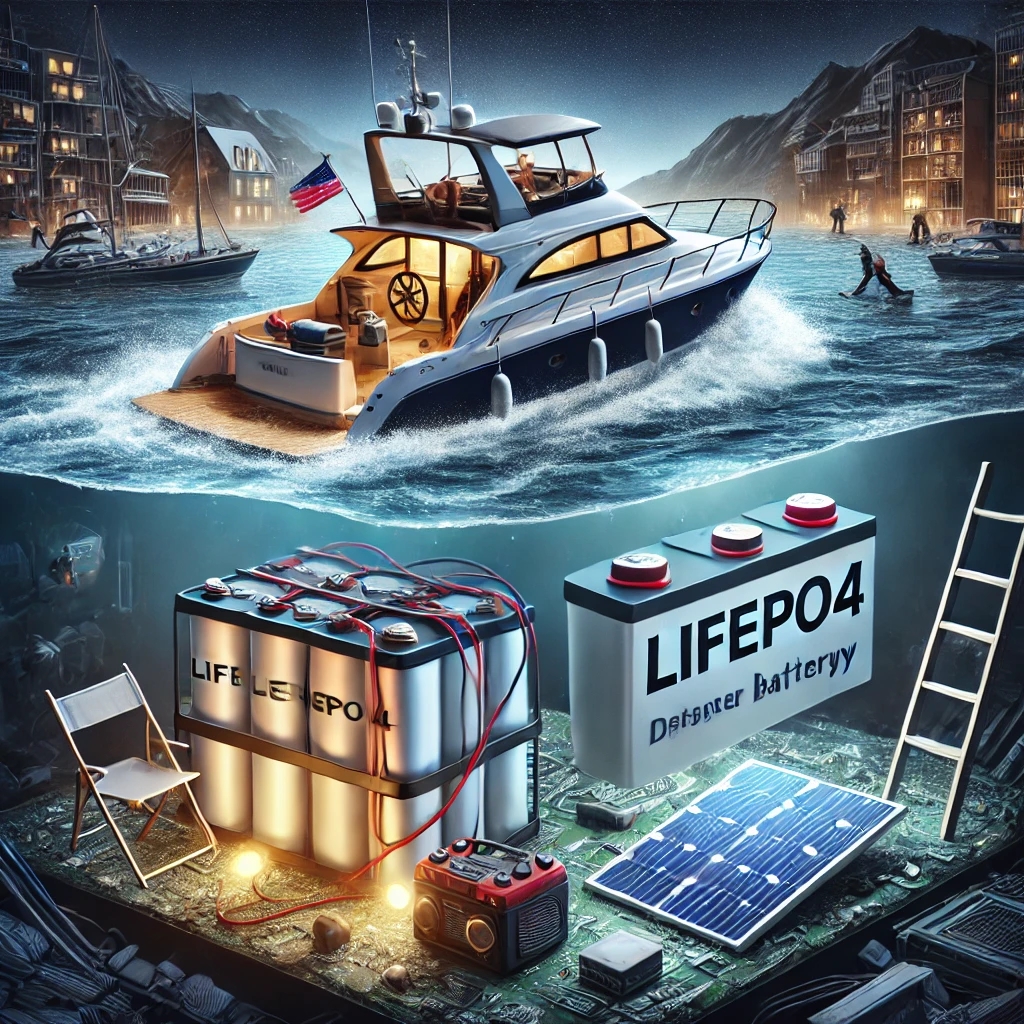Why LiFePO4 Batteries Are the Best Choice for Boats and Disaster Resilience

Why LiFePO4 Batteries Are the Best Choice for Boats and Disaster Resilience
LiFePO4 (Lithium Iron Phosphate) batteries have gained widespread adoption in marine applications and disaster preparedness due to their superior safety, durability, and reliability. In this article, we will explore why LiFePO4 is the best battery choice for both boats and emergency backup power.
1. LiFePO4 Battery Safety in Marine Applications
1.1 Waterproof and Corrosion-Resistant
Marine batteries are constantly exposed to moisture, saltwater, and extreme weather conditions. LiFePO4 batteries are built with:
Waterproof casings to prevent short circuits.
Corrosion-resistant materials to withstand marine environments.
Shock-resistant construction, ensuring durability even in rough waters.
2. Disaster Preparedness with LiFePO4 Batteries
2.1 Reliable Backup Power for Storms and Blackouts
Power outages due to hurricanes, storms, or wildfires can last for days. LiFePO4 for storm preparedness ensures:
Uninterrupted energy supply for essential devices.
Solar compatibility, allowing off-grid recharging.
Portable LiFePO4 disaster batteries, easy to transport in emergency situations.
3. Advantages Over Lead-Acid Batteries
Traditional lead-acid batteries suffer from:
Short lifespan (500-1,000 cycles vs. 3,000+ cycles for LiFePO4).
Slow charging times (6-8 hours vs. 2-3 hours for LiFePO4).
Heavy weight, making transport difficult.
Conclusion
LiFePO4 batteries are the safest and most efficient choice for both boats and emergency backup power. Their long lifespan, superior safety, and waterproof features make them ideal for:
✅ Boats (yachts, pontoon boats, sailboats, bass boats, etc.)
✅ Disaster preparedness (storm protection, blackout backup, portable emergency power)
READ MORE:
Why LiFePO4 Batteries Are the Ultimate Solution for Marine Energy and Disaster Readiness
How LiFePO4 Batteries Improve Energy Efficiency for Boats and Disaster Readiness
The Role of LiFePO4 Batteries in Emergency Preparedness and Marine Applications
Why LiFePO4 Batteries Are the Best Choice for Blackout Protection and Marine Power
How LiFePO4 Batteries Enhance Disaster Preparedness and Marine Safety
How LiFePO4 Batteries Improve Safety and Efficiency in Marine and Emergency Applications
Are LiFePO4 Batteries Safe for Boats and Disaster Preparedness?











